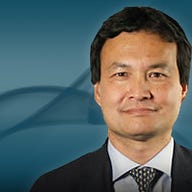Telstra to slash tech costs under review

Telstra plans to slash the number of network platforms and business and operational support systems it uses under a new "one factory" approach to managing its operations, the carrier revealed today.
- Telstra's New Strategy
- Slash 10,000 to 12,000 jobs over five years
- Invest more than $10 billion in next generation IP network
- Introduce $200 million field staff training program
- 3G GSM network to replace CDMA mobile network
- Reduce network platforms from 330 by 60%
- 80% of Internet customers will have broadband; up from 50%
- Cisco, Ericsson, Alcatel, Accenture, Siebel to supply hardware and software
In a statement released to the Australian Stock Exchange (ASX), Telstra said over the next three years, the number of network platforms would be slashed by 60 percent from about 330 and the number of business and operational support systems by 75 percent from about 1,200.
Telstra chief operations officer, Greg Winn, said a review of operations over the past four months showed investment was currently "spread across far too many networks and technologies".
Winn said he would also sharply reduce the number of vendors with a presence at the carrier.
The reductions are among several initiatives outlined today to boost the carrier's business -- depending on whether regulatory authorities such as the Australian Competition and Consumer Commission grant approvals. Others included investment of AU$10 billion over the next five years -- AU$2 billion to AU$3 billion of which is incremental over existing plans -- in building a next-generation IP MPLS network, reducing the number of full-time equivalent positions at Telstra by 10,000-12,000 from the current 52,000 over the next five years, introduction of an AU$200 million training program to provide field staff with the skills to build, deploy and run next-generation networks and consolidation of Telstra's three mobile networks to a national 3G GSM network in the 850 MHz spectrum.
The core of the IP network is due to be in place by the end of 2007.
Telstra said the existing CDMA mobile network and the Telstra and Big Pond Wireless Broadband services would remain in place "until the national 3G service has the same or better coverage and services.
"Wireless broadband coverage on the CDMA-based EV-DO network will continue to be expanded as part of our commitment to accelerate the growth of our leading wireless broadband service until such time as the national 3G service is available," Telstra chief executive officer Sol Trujillo said.
Winn said transformation of Telstra's IT capability -- including delivery of new application suites across business support systems such as customer relationship management (CRM), billing and care and operational support systems -- would require AU$1 billion of investment.
He announced the award of some business for delivery of the new infrastructure, with Cisco building the IP core, a memorandum of understanding being signed with Ericsson for delivery of the 3G platform including a clear path to so-called Super 3 and 4G services, Alcatel building the softswitches and most of the network platform for Telstra's next-generation network and a consortium including Siebel and Accenture securing a deal to deliver front of house, CRM and customer contact systems.
The carrier said the consolidation and transformation of its access network, public switched telephone network (PSTN) and backbone infrastructure to the IP MPLS core network would deliver speeds of 77 times the current network. It would allow the delivery of next-generation services such as Internet at speeds greater than 12Mbps, mass deployment of voice over Internet Protocol, multi-casting for capabilities such as IP TV and video on demand.
Wideband IP, ATM, frame relay, and digital data network would also be consolidated into the new network. More than 100 old PSTN switches would be replaced with 10 of the Alcatel-supplied softswitches, allowing the delivery of traditional telephony services and new offerings using the IP core infrastructure.
Telstra said its access network would deliver IP-based ADSL 2+ to four million service addresses, delivering speeds of 12 Mbps or greater. Fibre to the node technology will be delivered to 20,000 nodes, while 450 exchanges will be upgraded.
Other commitments outlined today included ensuring 25 percent of new revenues being derived from new products by 2008, a doubling of Sensis' revenue base to AU$3 billion within five years, growing the percentage of Internet customers on broadband from 50 percent to 80 percent within three years, raising the percentage of customers using third-generation mobile services from one percent to 25 percent within three years and the development of 16 "competency centres" to help large business and government customers transition to an IP environment.
BigPond has also signed a deal with Sony Pictures for the delivery of movie downloads to PCs from March next year and Sensis will offer new consumer-to-consumer transactions at the Trading Post.
Telstra chief executive Sol Trujillo said the carrier would not require the same number of employees and contractors as it currently had as the plan reduced complexity.
"With simplicity we can be leaner," he said.
He said Telstra's financial projections -- which included an expected EBIT decline in 2005/206 of between 19 percent and 24 percent as a result of implementing the strategy -- were based on the presence of a "reasonable" regulatory environment.
"If excessive regulation doesn't get in the way, we can hit the plan we have laid out today," Trujillo said.
"If it does get in the way, it has the potential to be harmful to our core".